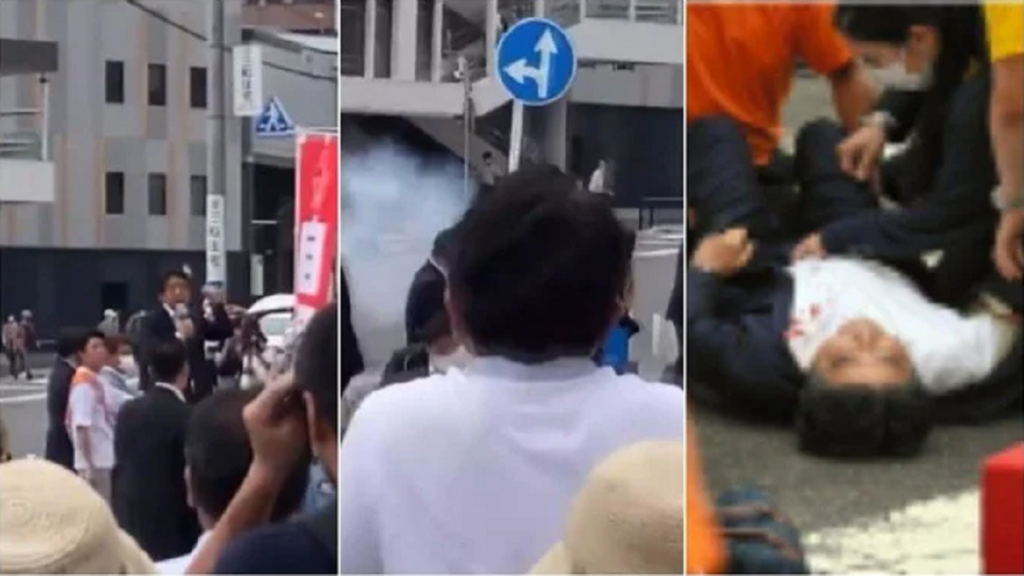Former Japanese Prime Minister Shinzo Abe was shot dead today when he was addressing an election rally. He was admitted to the hospital after the incident, where he succumbed to his injuries during treatment. The police has arrested a suspected accused who carried out the incident from the spot. The accused, Tatsuka Yamagami is a resident of Japan. However, the way this whole incident has happened, now there is a possibility of a big foreign conspiracy. It is being alleged that China has hatched a conspiracy to attack former Japanese PM Shinzo Abe. However, till now it has not been confirmed and no official statement of any kind has come out.

According to a report in The Japan Times, the suspect who shot Shinzo Abe was a former Japanese Navy officer. And accused has confessed to attempt to murder during interrogation. He has told that he was “dissatisfied” with Abe. He reached the venue as a journalist. He had taken a handgun with him. The attacker had kept the gun as a camera.
Why is the smell of the big conspiracy coming?
We spoke to Defense Specialist Col (Retd) Manjit Singh to find out and he raised five big questions on the attack on Shinzo Abe, which is pointing towards a foreign conspiracy.
1. How did the accused reach the former PM easily?
Shinzo Abe was the most powerful leader of Japan. Even though he is no longer the Prime Minister, but it is said that he used to play more in the government. In such a situation, despite tight security, how did the attacker reach very close to the former PM with a weapon? Was he also helped by any officer at the local level? Why was he not searched and if found, how did he escape? Because without any help, he cannot carry out such a big incident and the officers will help only when they have got help from above.

2. Why 15 minutes delay in arrival of ambulance?
Shinzo Abe has been a former prime minister and is still the chairman of Japan’s largest political party. According to the rules, wherever he goes, the entire convoy will accompany him. There is also an ambulance in the convoy. So why was there no ambulance in Shinzo’s convoy and why was he not taken to the hospital immediately after the incident? Why wait for an ambulance for 15 minutes?
3. How did the Chinese media break the news before Japan?
The attack was on the former Prime Minister of Japan, but the news first flashed in China. Even some media in Japan ran the news by citing the Chinese state media. After all, how can it be that this news should go on the Chinese media before the local media?

4. Who helped to make weapons at home?
The gun with which Abe was attacked is a homemade weapon. It was made by mixing duct tape and pipes. It looks exactly like a camera and two pipes are clearly visible on closer look. In such a situation, the question is also that who helped the accused in making this weapon?
5. Why the celebration in China?
As soon as the news of the attack on Shinzo Abe became viral, a kind of celebration started in China. When the whole world is praying for Shinzo Abe, China’s state-run newspaper is busy spewing venom against Japan. The question arises that why is China so happy with the attack on the former PM of any country?

What did China say?
After the attack on Shinzo Abe, China’s state-run newspaper Global Times has published an article. In this, quoting alleged experts, he claimed that this attack would certainly provoke Japan’s right wing. Also, being more active can rust. Not only this, economic crisis and social differences can arise in Japan. Abe’s successors could use this event to promote their free and independent Indo-Pacific region, active participation in the Quod and NATO’s entry into East Asia.
The Global Times further wrote, ‘This could make Japan’s right wing more active and restart the war. That too in the midst of economic crisis and social differences. This attack on Abe could prompt changes to Japan’s pacifist constitution. This will have a great impact on foreign policy such as relations with China and the US.

